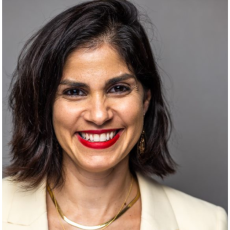You have recently taken up your current position; what is your vision for Sandoz in North America and what does success in the generics business look like for you?
At Sandoz, my vision is to make sure patients can access their medicines at the right time and at the right costs. When you look at the nature of the generics market, it is easy to notice that it’s a rewarding market, but there is price erosion, and the only way to continue increasing access to patients is by releasing more products - this is the essence of what we do and what we remain focused on.
Something of particular importance for me is the connection to our people - our customers, patients and employees. I believe that diversity and inclusion fosters innovation and provides a competitive edge. This preoccupation for people also extends to the day-to-day of our operations - an example being trying to make sure that with remote work our employees remain healthy both physically and mentally.
When it comes to success, I would simplify it to the ‘what’ and the ‘how’. The ‘what’, for me, is to grow above the market. We do not play in all therapeutic areas, but where we play, the way of assessing success lies in that comparative growth. The ‘how’ is all about the culture and knowing what our customers want and what they need.
Generics is one of the most competitive fields within the biopharma industry; What does Sandoz do in order to keep an edge in such a market?
A lot of what we do is very similar to what other competitors do - so, indeed, this is as competitive a field as you will find. So the question is; what is the difference between Sandoz and other companies? The first part of the answer lies within our portfolio, which we remain focused on continuing to grow. Biosimilars are a very important pillar for us - biologics are growing in strength and creating huge opportunities. When we talk about access, in the U.S. there is already 91% access to small molecules, but this statement is not true for large molecules like biologics. Therefore, we are very proud to be doing our part to help increase the number of patients who can get access to biosimilars.

According to our studies, by 2025, 1.2 million additional patients could get access to biologics just by virtue of the fact that we will have a greater volume of biosimilars available.
In what ways do you think the Inflation Reduction Act will affect innovation in the life sciences?
I am afraid it is too early to say - everyone, including ourselves, is very close to what all of this will mean. The ambition of the legislation is positive; to reduce the cost for the patient. The ‘how’ is more controversial. In what concerns negotiation speed, which is the most relevant to our industry, I strongly believe that competition is the best approach to costs - hence we are concerned about the unintended consequences of the IRA. If we engage in a comparative analysis between markets in the U.S. and markets abroad, it is unavoidable to affirm that competition is what drives cost. If one looks at biosimilars and generics, in 2021 we brought more than $373 billion in savings - so our current approach is definitely working when thinking about how big the savings for the system are, and we also see that this is what actually allows for innovation, as when we take the budgetary constraints down, payers and insurance companies are allowed to bring in more capital for innovations. Now, if the price is going down dramatically without competition, the question lies in whether or not a company like ours will have enough incentives to develop new drugs, because the cost of development did not change. However, we will keep on doing everything we can to make sure we bring value to the system and solutions to our patients.





